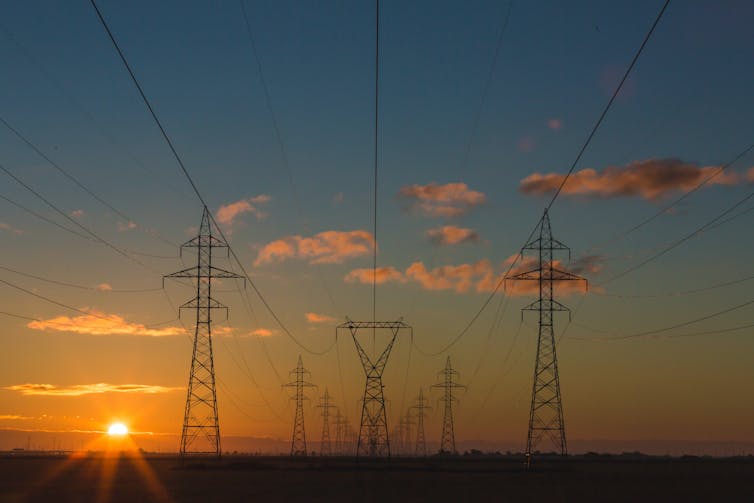
By Doug Specht
Technology companies have been having a difficult year. The increased cost of living is turning people away from streaming, cryptocurrencies are faltering, Amazon has raised its prime membership costs, as has Twitter for its premium subscription model Twitter Blue. The latter’s ongoing legal wranglings with Elon Musk have also called the platform’s valuation and future product offering into question.
Not long ago, these companies were untouchable, but the most recent tech bubble seems to have burst. So, this is a good time to reflect on what these companies have offered to the world. They have certainly enabled fast access to film and TV, global conversations and perhaps even a challenge to status quo economics via digital currencies. But what about their environmental impact?
As we enter a new era for the tech sector, combined with rising demand for businesses to be more climate aware, these companies will need to consider how technology affects the environment. Research estimates that e-waste – discarded electrical items, from chargers to photocopiers – could double between 2014 and 2030. And new regulations have begun tackling this physical waste, including chargers and device repairs. But, to reduce the world’s digital carbon footprint, these efforts need to go beyond the physical to include the impact of data use on the environment as well.
You’ve probably heard that cryptocurrencies are bad for the environment due to the huge volumes of energy used to “mine” or produce digital currencies. One study found it can consume more energy than mining an equivalent amount (by market value) of actual minerals like copper, gold or platinum. Other estimates show the buying and trading of bitcoin generates 18 million tonnes of carbon dioxide each year.
Get your news from people who know what they’re talking about.
Get newsletter
But even people who haven’t bought into digital currencies might be surprised at the carbon footprint they are leaving via their online activities. The energy used to stream all of Breaking Bad on Netflix is estimated to emit the equivalent pollution to driving 27 miles. Even the average social media user’s daily scroll of 2 hours 24 minutes was found to create similar emissions to driving more than 330 miles in a petrol car.
Where we are in the world also affects how electricity is generated to power our TV, computer or smartphone, changing our individual emissions. And the digital companies we engage with have very different ways of powering their infrastructures. Facebook now claims to be carbon neutral, while Tiktok and Reddit produce the highest carbon footprints of the ten most popular social media apps.
Even where tech companies have reduced their carbon footprints by using renewable energy, the large volumes of electricity they consume to power things like data centres places strain on these resources. As the world struggles to limit global warming to a target of 1.5℃ above pre-industrial levels, it’s clear that something needs to change.
People power
Small personal changes to our online habits can add up to a surprisingly significant impact. After all, every digital interaction we have directly affects emissions. If every British adult just sent one less “thank you” email, the nation could save 16,433 tonnes of carbon a year. Of course, if the choice is between travelling, especially by plane, or sending an email or making a video call, then the digital approach is far less damaging.
Really tackling the power consumption and polluting habits of big tech will take more than getting people to send less emails, however. First, regulation must encourage digital technology powered by renewable energy sources as standard. Digital technologies account for as much carbon emissions as the aviation industry, and this is increasing. A move to renewable energy would make digital technology less damaging by taking fossil fuel burning out of the supply chain.
Second, to ensure that enough renewables are available to power the rest of society as well as digital technologies, we must discourage or reduce emission-intensive activities that generate huge wealth at the expense of users. For example, online advertising. The energy needed to power the average online ad campaign emits 5.4 tons of carbon dioxide – a third of what an average US consumer produces in a year – as well as encouraging more consumption of goods.

Finally, and most importantly, a redistribution of wealth and degrowth policies targeting tech companies could reduce unnecessary consumption. Just 63% of the global population have access to the internet, with most digital emissions generated in more economically developed countries.
The wealth generated by the technology industry is even more uneven. A relatively small number of individuals have made a lot of money in the tech industry, which often burns fossil fuels to power the data centres that keep our devices, social media and streaming platforms online. There is also evidence showing that the wealthly contribute more to climate change. Super yachts, private jets and vast homes are the reward for successful digital tech owners.
Shifting our focus from gross domestic product growth to economic measures that focus on quality of life and wellbeing not only reduces carbon, but will lift living standards for all. Of course, this should stretch beyond digital infrastructures and toward all sectors of society.
Some will complain that these three solutions will increase costs, stifle innovation or mean some tech companies fail. But if innovation comes in the form of digital tech companies burning through 300 million tonnes of carbon a year, then we can do without it.
If we don’t consider such changes, we stand to see less cat videos online, and more videos of wildfires, flooding and devastating weather events as climate change accelerates.

